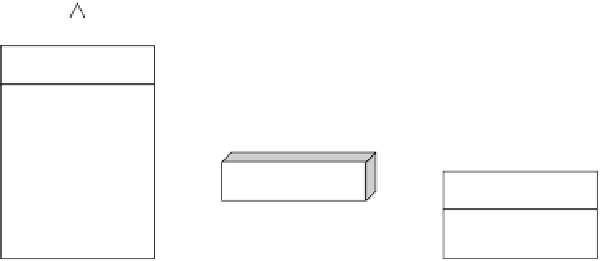Database Reference
In-Depth Information
Lake
City
State
LakeName
AcidLevel
CarbonDioxide
...
CityName
CityPopulation
...
StateName
StatePopulation
...
Fig. 11.11
A nonstrict spatial hierarchy
11.2.2 Spatiality and Measures
Spatial measures
are measures represented by a geometry. For example,
Fig.
11.6
shows a spatial measure
CommonArea
, which represents the geom-
etry (a line) of the part of a highway segment belonging to a county. The
MultiDim model allows spatial measures independently of the fact that there
are spatial dimensions.
Insurance
Category
CategoryName
...
AgeGroup
Year
GroupName
MinValue
MaxValue
...
Year
Quarter
InsuranceType
Quarter
Insurance
Age
Client
InsuranceNo
ValidityPeriod
...
Month
ClientId
FirstName
LastName
BirthDate
Profession
SalaryRange
Address
...
Month
Calendar
Accidents
Time
AmountPaid
Location
Date
...
Fig. 11.12
A fact with a spatial measure
Various kinds of aggregation functions for spatial data have been defined.
For example,
spatial distributive
functions include convex hull, spatial union,
and spatial intersection. Examples of
spatial algebraic
functions are the center
of
n
points and the center of gravity, and examples of
spatial holistic
functions
are the equipartition and the nearest-neighbor index. In the MultiDim model,
the spatial union is used by default for aggregating spatial measures, as we
already explained.
Spatial measures allow richer analysis than nonspatial measures do. For
example, consider the schema in Fig.
11.12
, which is used for analyzing






























Search WWH ::

Custom Search